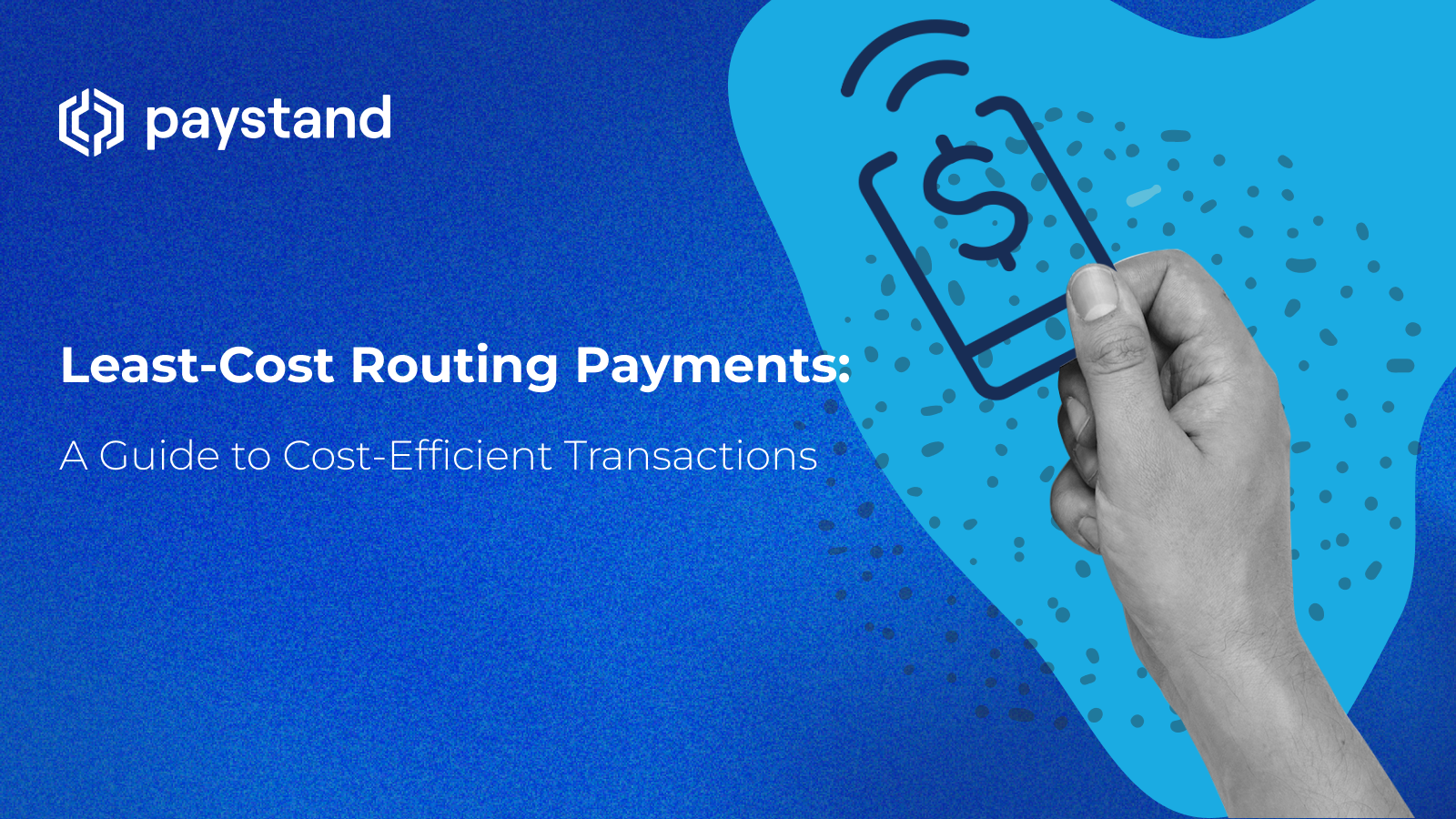Least-Cost Routing Payments: A Guide to Cost-Efficient Transactions

Table of Contents
- What is a routing payment?
- What is a least-cost routing payment?
- What is a least-cost routing payment network?
Key Takeaways
- Least-cost routing payments (LCRP) reduce processing costs by optimizing payment routes, ensuring quick, secure, and cost-effective transactions
- Routing payment is essential in financial transactions, directing funds efficiently from payer to recipient through a structured process
- LCRP differs from ACH because it focuses on cost savings through strategic routing, while ACH is a network that typically processes payments in batches
- An LCRP network, like the Paystand B2B Network, minimizes transaction fees by connecting financial institutions directly, bypassing intermediaries
- Businesses can benefit from LCRP by reducing fees, improving cash flow, and enhancing customer satisfaction
In financial transactions, least-cost routing payments (LCRP) offer a smarter way to move funds by minimizing processing costs. Whether it’s a routine transfer or a complex business transaction, LCRP ensures that payments reach their destination quickly, securely, and at the lowest possible cost. Understanding how LCRP works is crucial for anyone managing digital payments, as it directly impacts efficiency, cost savings, and overall financial security.
LCRP is revolutionizing the backbone of B2B payments by optimizing payment routes for maximum savings.
Curious how it compares to traditional methods like ACH? Discover how LCRP can help you cut costs and boost your bottom line.
What is a Routing Payment?
Routing payment is essential in any financial transaction involving fund movements from one account to another. It ensures the payment is directed to the correct recipient and processed efficiently. At its core, it is how a payer's financial institution instructs the recipient's financial institution to credit the funds into the designated account.
The routing payment process typically involves several key steps:
- Initiation: The payer initiates payment by providing the recipient's account, transfer amount, and payment date, typically through online banking, mobile apps, or checks.
- Authorization: Payment details are verified by the payer's financial institution to prevent unauthorized transactions and fraud.
- Routing: The payer's bank uses the routing number to identify the recipient's bank, ensuring accurate payment delivery.
- Settlement: Financial institutions securely transfer payment instructions and verify transactions. Upon confirmation, funds are credited to the recipient's account.
- Confirmation: The payer and recipient usually receive payment confirmation from their banks via email, text, or statement.
Routing payment plays a crucial role in the smooth functioning of financial transactions. It ensures that funds are transferred securely and efficiently, facilitating commerce and enabling individuals and businesses to make payments seamlessly.
What is a Least-Cost Routing Payment?
Least-cost routing Payment (LCRP) is a payment processing method that minimizes electronic payment processing costs by routing payments through the most cost-effective channels, like ACH and debit networks. This can help businesses save money on processing fees, which can be significant for high-volume merchants.
Some benefits of using LCRP are:
- Reduced payment processing costs
- Improved cash flow
- Faster access to funds
- Reduced risk of fraud
- Improved customer satisfaction
Is ACH the Same as Least-Cost Routing?
ACH and least-cost routing are two distinct methods for processing electronic payments. While they share some similarities, the two also have key differences:
- ACH is a network, while least-cost routing is a strategy
- ACH payments are typically processed in batches, while least-cost routing payments can be processed individually
- ACH payments are typically available within one to two business days, while least-cost routing payments can be available almost immediately
- ACH is a more secure payment method than least-cost routing
The best payment method depends on specific needs and circumstances. ACH is a secure and reliable option for processing electronic payments. To save money on processing fees, least-cost routing may be a better option.
What is a Least-Cost Routing Payment Network?
An LCRP network is designed to optimize payment routing between financial institutions. The network operates on a decentralized platform, enabling connection and direct payments, bypassing intermediaries. This direct connectivity eliminates costly intermediate fees, resulting in lower business transaction costs and reduced consumer fees.
An excellent example of a least-cost-routing network is the Paystand B2B Network, designed to steer customers to the payment rail, resulting in the lowest cost to the merchant. Paystand's platform lets you control which payment options appear in your payment portal, helping you reduce fees and processing costs. You can even add a convenience fee to discourage customers from costly payment options while offsetting associated expenses.
By combining our network with over 18,000 partner banks with additional payment options, you can automatically route payment processing to the most affordable option. It reduces costs and lets you get paid faster than ever without sacrificing the customer experience.
See how it works in action through a free, customized demo. But if you need more convincing and want more tips on reducing transaction fees, check out our deep dive into eliminating credit card fees.





